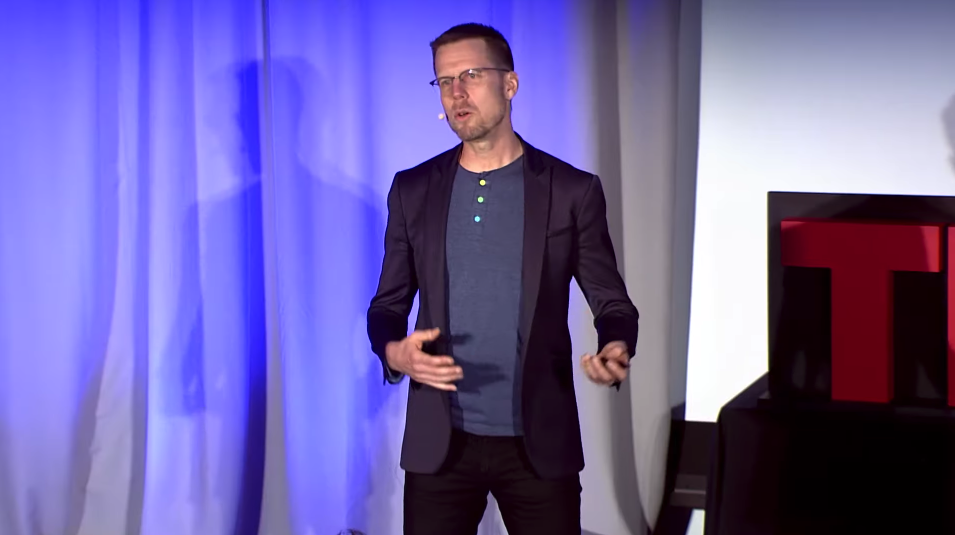Joshua Spodek holds six patents. He’s also an astrophysicist, swam across the Hudson River, earned five Ivy League degrees, teaches at the business schools of NYU and Columbia, writes a column for Inc., and has founded a few ventures, including a company called Submedia. And this is just some of what he’s accomplished. According to Spodek, one of his biggest secrets to achieving so much is making a commitment to do what he loves and try his hardest to eliminate the stuff he doesn’t love. Over the years, Spodek has become an expert at leadership. He teaches leadership and entrepreneurship classes, hosts the Leadership and the Environment podcast, and wrote the bestseller Leadership Step by Step: Become the Person Others Follow. We asked him what the qualities of a leader are and how to develop them, and he provided some top-notch advice.
What does it take to become a good leader?
Leadership’s an active social, emotional, performance-based deal. It’s something you do, not just something you are. To become a good leader, you need to practice the basics. If you want to learn how to play piano, you have to learn scales. If you want to play basketball, you have to practice dribbling. And if you want to learn leadership skills and how to lead effectively, you need to find and practice those basic leadership exercises that are equivalent to scales for music. It starts off fairly mechanical. But somewhere along the way, it becomes an authentic, genuine expression of yourself. And that’s when people start to follow in your lead.
What are some basic exercises we can practice to develop qualities of a leader?
My book has 22 exercises you can use to develop the qualities of a leader, but there are more out there. If a leader you know has a specific skill you want to have, figure out how they developed it and then you can do that, too. Some of the leadership skills I talk about in my book—and provide exercises for—are: building self-awareness, creating meaningful connections, and inspiring others.
How can a leader build self-awareness?
For at least a week, carry around something to write with and something to write on. Two or three times a day, write down your inner monologue. Do not write down what you’re going to eat or do later—that’s what you’re thinking about, and that’s not what you’re actually thinking and feeling at that very moment.
The first few times you try this, you’ll be getting the hang of separating your inner monologue from what you’re actively thinking about. But that’s why you need to do it for a week. By day three or four, you’ll be able to capture a few lines of the actual thoughts going through your head. And at the end of the week, you can see if there are any trends. It costs nothing, takes less than a minute a day, and you can do it whenever and wherever. That’s one of the most effective ways to raise self-awareness—but you have to keep at it and do it more than once.
How can people practice creating meaningful connections?
Before I started doing leadership, I was very poor at meeting people. At events, I wouldn’t talk to anyone. I didn’t know how. So I developed a meaningful connections exercise that helped me get to know other people, and it starts off with asking what someone is really passionate about.
I say, “What’s a passion of yours besides work and family?” And I make sure to get specific. If they answer with something like, “Spend time with my friends,” I follow up by asking what specific types of activities they like to do when they’re with their friends. And I share back. When people start sharing stuff with you, it’s almost inevitable that you’ll want to share, too. And, generally, they want to hear about it as well, and it becomes a two-way thing. That’s where a meaningful connection is born.
How can we learn to inspire others as a leader?
This one can take a while. In order to do it, you have to first understand and lead yourself. Then, you have to understand others. After you’ve done all that, you can lead—or inspire—others. The basic gist, though, is to behave and communicate in ways that make others feel comfortable sharing what they care about with you. Normally, people don’t share because it makes them feel vulnerable. So you have to make it clear that you’ll support them, not judge or make fun. Once they feel good about sharing, you can connect what they care about to a task. You imbue that task with personalized meaning, and they feel like they’re doing it for themselves, not for you. They will love what they do and feel inspired.
How can leaders make others comfortable?
You can’t just say, “Share something deeply personal, I won’t judge.” You have to communicate it in other ways, such as not talking over them, actively listening, paying attention to body language, repeating back to them what they say. Ask questions, and when they answer, show non-judgemental support. You want to make sure they feel understood—that’s one of the most powerful feelings.
What are some ways leaders can make people feel understood?
One way is to say, “Let me make sure I understand you right. Is this what you meant?” They are almost always going to correct you. Keep repeating what they say back to them, trying to confirm that you’re understanding correctly, until they say, “Yes. You got me. That’s what I was trying to say. That’s what I feel.”
For more expert advice from industry experts, check out our newsletter and blog. And if you’re in LA, NYC, or San Francisco, come say hi at one of our events. (More cities coming soon!)
This interview was conducted by Aastha Jain and condensed by Abby Wolfe.

